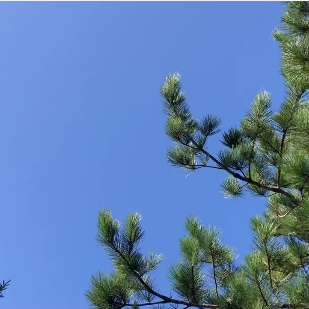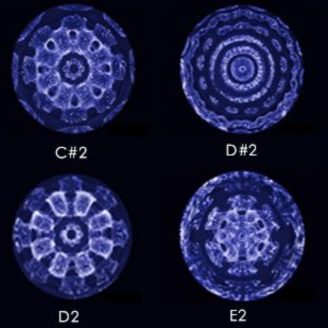ISMETA Member Kelly Ferris, MFA, RSME
Full article can be found in the Journal of Dance Education
I recently traveled with a group of college students on a day trip to New Orleans, LA for an observation of social dance and culture. The students’ assignment included finding moments of spontaneous social dance and analyzing relationships, body language, movement vocabulary, and more. At the end of the day, I was struck by one student’s comments. He noticed that the majority of people stood as still as possible to video the live music and performers around the French Quarter. As the conversation concluded, the student’s realization that so many people were more interested in documenting their experiences rather than experiencing the moment lingered with me.
What does it mean to truly experience the moment? Consider your last experience as a performer. What sensations resonated? As you dove into the expression of the dance, what did you feel in that moment? How did you relate to the audience? How did the spontaneous moments fulfill the intention of the dance? In fact, what are you feeling and sensing in this present moment as you read this article? In contrast to many people in our society, dancers seek deep awareness of present moments in movement and an overall sense of embodied consciousness. For dancers, the moments of embodying performance, tuning in to the body and mind within a technique class, and creating choreography from personal movement preferences and inspirations is a way of life. Dancers develop keen self-awareness skills and sensing in the present moment in a multitude of ways, thus exposing the possibilities in the mingling of dance and somatics.
What is somatics though? It often seems to describe so many practices, strategies, movements, choreographic processes, and more in dance and higher education. Some dance students suggest that they have had “too much” somatics, and yet they can’t define the field of study. The root of somatics is soma, a Greek reference to the self, or physical body. The International Somatic Movement Education and Therapy Association’s website elaborates:
The field of somatics has developed over the last century through a process of inquiry into how consciousness inhabits the living body. The term is derived from the word “somatic,” which means pertaining to the body, experienced and regulated from within.
Another simple and short way to consider somatics is as an experience of the self in the present moment. For instance, a dancer might stand in parallel with closed eyes and tune into the way that breath flows through the body, where tension exists, and how weight is distributed. A body scan offers infinite information to the one who invites the observation. However, the present moment of a particular body scan is unique. The same facilitation of a body scan can happen ten minutes later, an hour later, or tomorrow, and new information will be observed. We are ever-changing beings, and our self-awareness oscillates throughout the days and years.
The commonalities among somatic movement experiences become apparent in the focus on experiential and functional anatomy, attention to habitual movement patterns, developmental processes, hands-on body work, empathetic communication (verbal and nonverbal), and self-reflection. Many people seek out somatic practices as a way to relieve stress, attend to chronic pain, or recover from trauma. Still others might seek out ways to investigate the body–mind connection or even to repattern functional movement patterns, like posture and walking.
In many ways, somatic experiences can be akin to self-awareness, but somatics as a genre is much more complex than this. An individual observes his or her state of being in the present moment with a sense of non-judgment, and then invites a process of self-reflection and consideration of positive change. The change might be on a physical level, such as releasing a tense muscle, on a nervous system level of integration, or a mental level of stress relief. Thomas Hanna (1995 Hanna, T. 1995. What is somatics? In Bone, breath, and gesture: Practices of embodiment, ed. D. H. Johnson, 341–52. Berkeley, CA: North Atlantic Books.), a pioneer in the field of somatics, articulated, “The human is not merely a self-aware soma, passively observing itself, but it is doing something simultaneously: it’s acting upon itself; i.e., it is always engaging in a process of self-regulation” (344). We each make choices based on the simultaneous internal and external observation, and this regulation is often termed repatterning, a common concept among somatic practices.
The observation and reflection of movement experience is central to somatics and dance. In “Why Robots Fall Down,” a keynote address for the American Society for Cybernetic annual conference, Lawrence Goldfarb (1993 Goldfarb, L. 1993. Why robots fall down. Keynote address delivered at American Society for Cybernetics annual conference, Philadelphia, PA. ) said, “The importance of exploratory movements in perception and coordination is generally not appreciated. We are unaware of the ongoing wobble of standing and the role it normally plays in our marvelous sensitivity to balance” Later he stated, “Learning a new movement means learning about what is already happening, so as to understand what to change. It also means figuring out which aspects of dynamics to attend to, that is, learning a new movement means learning what to notice” (Goldfarb 1993 Goldfarb, L. 1993. Why robots fall down. Keynote address delivered at American Society for Cybernetics annual conference, Philadelphia, PA.) Isn’t this the crux of what dancers do? We learn, create, and teach movement. It is the responsibility of a dancer to investigate the “interlocking reciprocity between sensing and moving [is] at the heart of the somatic process—a process that constitutes its own unity and continuity by constant self-regulation” (Hanna 1995 Hanna, T. 1995. What is somatics? In Bone, breath, and gesture: Practices of embodiment, ed. D. H. Johnson, 341–52. Berkeley, CA: North Atlantic Books., 344). Dancers notice a present moment, reflect on sensations and feelings, and then observe the next present moment of experiencing movement. This reflective process leads to changed performance intention, technical understanding of movement vocabulary, and creative problem solving.
Many university programs incorporate somatic practices into their curriculum, but again this can come in many forms. For example, an Introduction to Somatics course might include a survey of somatic practices such as Feldenkrais®, Rolfing™, Body-Mind Centering®, Alexander Technique, Laban Movement Analysis/Bartenieff Fundamentals™, and so on. Other courses may be labeled more generally as movement analysis. These types of courses are likely grounded in learning ways to describe movement, and based on the individual’s experience through functional anatomy lessons.
Another approach includes teaching movement and dance somatically. To teach movement from a somatic perspective, one might accentuate experimentation over replication, attend to the whole self (thinking, sensing, feeling, and intuiting), or invite multiple routes of reflection (Lester 2015 Lester, K. 2015. Environments for self-learning. In Moving consciously: Somatic transformations through dance, yoga, and touch, ed. S. Fraleigh, 93–108. Chicago: University of Illinois Press., 95). Imagine a dance technique class experience in which the teacher describes movement rather than demonstrating. This allows each student to explore the dance without trying to execute in the exact way the teacher performs it. An experience like this can be expanded through an open dialogue with a peer or the whole class on the feeling, sensations, and decision-making process of learning the described movement.
A somatic dance class experience could also take form through defined observation. For example, students might observe a partner, notice intricacies of movement, and then provide guided feedback through touch only. The touch invites the dancer to sense the simultaneous actions on an internal and external level. Feedback through verbal exchange is also imperative, but framing it as time for dancers to discuss personal observations of the self, as opposed to giving corrections to another dancer, keeps attention on sensations, feelings, and intuition. Asking what changed in this dance or how one experienced internal shaping in this dance encourages individuals to consider the present moment of dancing. Another way to deepen observation skills and tune into the whole person is teaching a phrase through demonstration only. This requires detailed observation of the teacher as students to sense the movement.
Simply starting a class with a body scan does not qualify it as a somatics-based dance class, nor does referencing anatomy throughout a class make it somatic. Certainly, these strategies offer moments of self-awareness and analysis, but more possibilities exist. As Sondra Fraleigh (2015 Fraleigh, S. 2015. Prologue on somatic contexts. In Moving consciously: Somatic transformations through dance, yoga, and touch, ed. S. Fraleigh, xix–xxxi. Chicago: University of Illinois Press.), founder of the Eastwest Somatics Institute, described, “When it is taught or practiced from a somatic point of view, dance takes on a set of values associated with perceptual knowledge, also including aesthetic and cultural experience” (xxii). Intention and context take a class to a deeper investigation of the soma (self) and provide dancers with more tools to explore and experience movement. The somatic-based dance experience values the differences among the individuals in the classroom. These differences exist in the sensations, the connections, and the feelings of the dancers that lead to the execution of similar movements. College professor and dance author Karen Schupp (2014 Schupp, K. 2014. Studying dance: A guide for campus and beyond. Champaign, IL: Human Kinetics.) wrote, “Somatic approaches are used in technique and movement classes so that students can better feel their movements from the inside. When you develop the skills to internally assess your movement based on how it feels instead of how it looks, you will be more self-responsible in your dance learning” (116).
Dr. Martha Eddy (2009 Eddy, M. 2009. A brief history of somatic practices and dance: Historical development of the field of somatic education and its relationship to dance. Journal of Dance and Somatic Practices1(1):5–27.), founder and director of the Center for Kinesthetic Education, a prominent researcher in the field of somatics, and former president of ISMETA, wrote, “Somatic pioneers discovered that by being engaged in attentive dialogue with one’s bodily self we, as humans, can learn newly, become pain free, move more easily, do our life work more efficiently and perform with greater vitality and expressiveness” (6). Dancers might be interested in diving deeply into a somatic practice as a complement to their dance career. Many dance educators and choreographers incorporate somatic processes and strategies into technique class, choreographic works, and performances. Other dance professionals make careers as somatic educators and therapists. These somatic modalities inherently facilitate self-awareness and self-learning by placing ownership of learning in students’ hands, and the possibilities for cross-pollination with dance are limitless. The word somatic might exist in your dance world as a noun, or it might be an adjective. In either facet, dancers bring their somas to movement and creative practice classes, rehearsals, and performance.
The entwining of dance and somatics can lead to a more embodied experience of the self in dance class and performance. Margaret H’Doubler has been quoted as saying, “you are your own textbook, laboratory and teacher” (Olsen 1998 Olsen, A. 1998. Body stories: An experiential guide to anatomy. Lebanon, NH: University Press of New England., 7). Fraleigh offered that “the most important teacher you will ever have is your body.” Addressing students in a dance technique class, dance professor and pedagogy specialist Bill Evans said, “We are all having the same class, yet we are each having a different class.” These aphorisms acknowledge students as individuals who have different learning experiences even when they are in the same room following the same cues of movement and inquiry. This is the power of somatics and the bridge into the dancer’s experience as an educator, performer, and choreographer.



